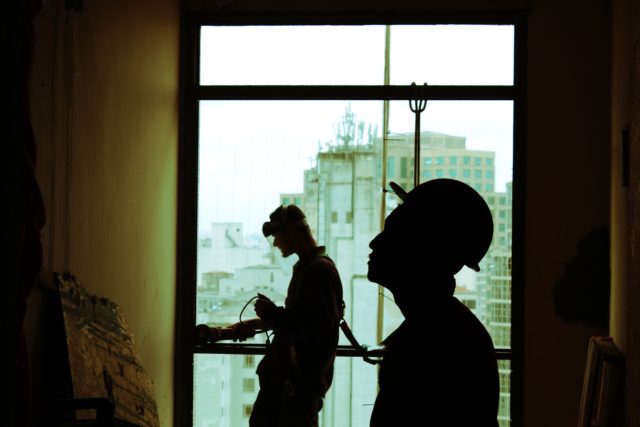What is a cover letter?
Your CV is a summary of your relevant employment history and skills. Your cover letter, on the other hand, is the opportunity to zoom in on your most pertinent abilities to make it clear to prospective employers why you should be invited for an interview. In summary, it’s an extra chance for you to sell yourself and put you ahead of the competition, rather than rewrite your CV.
Conduct your research before writing
Before you start writing your cover letter, you must thoroughly research a few things, to ensure your cover letter is tailored appropriately. Consider the following questions:
- Who is reading your letter?
- What are the key requirements in the job description?
- What is the company culture like?
- Who are the employer’s competitors?
- Are there any engineering trends or news stories you should be aware of?
- What are the organisation’s aims over the coming months and years?
Once you’ve answered as many of these questions as possible, you’ll be armed with enough knowledge to write your cover letter and clearly signal your suitability for the role and the industry.
Addressing the letter
How you address your cover letter is one of the most crucial parts of writing the document. Try to find the name of who will be reading your letter, whether that is the hiring manager, recruiter or your potential line manager.
More often than not, the relevant name will be listed in the job spec. If it’s not obvious who the correct person is, you could always phone the prospective employer and ask. While you may be embarrassed about doing so, your proactive approach will be memorable for the right reasons.
If you can’t get hold of someone’s name, ‘Dear Sir/Madam’ will suffice.
Most cover letters today are sent online; therefore you don’t have to lay it out like a formal business letter with a date and addresses. However, bear in mind that many recruiters prefer a formal letter, unless you’re emailing your application – in this instance, your cover letter should be the email.
How to structure your letter
While there’s no strict way to write a cover letter, there are four main points you should try to address. Consider structuring the body of your letter like so:
Paragraph 1: What position are you interested in?
Your opening paragraph needs to be brief and concisely explain why you’re writing. Mention the role you’re applying for and perhaps where you found the job.
Example: I am applying for the Design Engineer role that I saw advertised on Engineering Jobs. Please find my CV attached for your consideration.
Paragraph 2: What are your key skills and abilities?
The next paragraph is your chance to explain why you are suitable for the position. Identify a couple of skills and abilities from your CV that the prospective employer will find the most valuable. Keep the requirements of the role front of mind at all times as you must keep your points tailored to the job to show you’re a match.
Example: As you can see from my CV, I have over 10 years’ of experience in the design engineering industry and specialise in the software engineering sector. In my current role as Head AI Designer, I have led over 18 projects involving speech and facial recognition software and a team of 8 Designers, making me an ideal candidate for this position.
Paragraph 3: Why do you want to work for the company?
This paragraph is your chance to show the employers why you want to work for them and show them what you can do for the company as a result of your skill set. Impress the recruiter with your knowledge of the industry, their company culture and core values.
Example: AI is a trending form of technology, and its use is set to increase over the coming years. As one of the few experienced Design Engineers in this branch of tech, I am confident that I can bring a new level of success to your company and actively contribute as soon as possible.
Paragraph 4: Prompting an interview
Your final paragraph needs to be strong. Avoid stating ‘I look forward to hearing from you’ and end with a call to action instead. Thank them for reading your letter and tell them your availability for a callback.
Example: Thank you for taking the time to read my letter and application. Please feel free to call me on 01234 567890 weekdays, any time after 4pm, to discuss my suitability for this role.
Closing your cover letter
If you’re writing your letter as a formal business letter, then sign it off with ‘yours sincerely’ if you know the name of the recipient, or ‘yours faithfully’ if you don’t, and your name.
If you’ve opted against a formal letter or are sending your cover letter as an email, wrap it up with ‘kind regards’, followed by your name.
Formatting tips and tricks
Your cover letter should be anywhere from a half to a full A4 page – definitely no more.
Ensure it’s easy to read by choosing a font type, such as Calibri or Arial, sized 10 to 12. Implement clean paragraphs that aren’t too long and waffly, or short and pointless. Maintain a balance of text and white space and for the ultimate professional feel, justify the text so the letter looks neat and complete.
Before you send your tailored cover letter, give it a final proof, checking for typos, grammatical errors and any factual inaccuracies – you don’t want to accidentally write that you have 2 years’ experience, when really you mean 20!
Once you’ve polished your cover letter and made your final checks, you’re ready to submit your job application.






